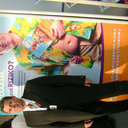[Inflammatory response and C -reactive protein value in patient with acute coronary syndrome].
Ключови думи
Резюме
Inflammation plays an important role in the pathophysiology of acute coronary syndrome as well as in the process of atherosclerosis in general. At the moment of myocardial ischaemia, local and systemic inflammatory reaction is amplified; in ischaemic myocardium there is increased expression of proinflammatory cytokines, particularly interleukin-6, which mediates C reactive protein (CRP) production by hepatocytes. CRP activates the complement cascade and thereby contributes to the lysis and removal of damaged cardiomyocytes. Whereas in a healthy population CRP levels range from 1.2 to 2.0 mg / l, in patients with ACS the levels of CRP significantly increase with the peak of 2nd to 4th day from the onset of myocardial infarction. Peak CRP levels ranged from 20 to 250 mg / l in patients with STEMI treated conservatively, the median of peak of CRP levels was 79 mg/ l in patients with anterior wall STEMI treated with primary PCI. There is a recommendation of CRP evaluation within the early risk stratification of patients with ACS according to the current ESC guidelines. In patients with NSTEMI, CRP levels > 10 mg/ l are associated with increased longterm mortality. In patients with STEMI treated with primary PCI, CRP levels > 79 mg/ l could predict negative left ventricle remodelation. The predictive value of GRACE risk score was improved using CRP, levels > 22 mg/ l predicted worse prognosis in patients with either STEMI or NSTEMI treated invasively. However, if also cardiac troponin and natriuretic peptides in addition to GRACE risk score were used, CRP levels were useless in further risk stratification improvement. In clinical practice, in terms of coinciding infection, problems with CRP levels interpretation can occur as well. Several patients either in cardiogenic shock or after cardiopulmonary resuscitation have signs of systemic inflammatory response, and sometimes it is very difficult to decide whether there is a necessity to iniciate the antibio-tic therapy because of infectious cause. In patients after cardiopulmonary resuscitation, CRP levels > 180 mg/ l indicate highly probable infection, but with the poor sensitivity. For patients in cardiogenic shock, procalcitonin appears to be more useful for the detection of infection; in this group of patients, procalcitonin levels > 2 ng/ ml are common, and levels > 10 ng/ ml indicate infection undoubtedly.


